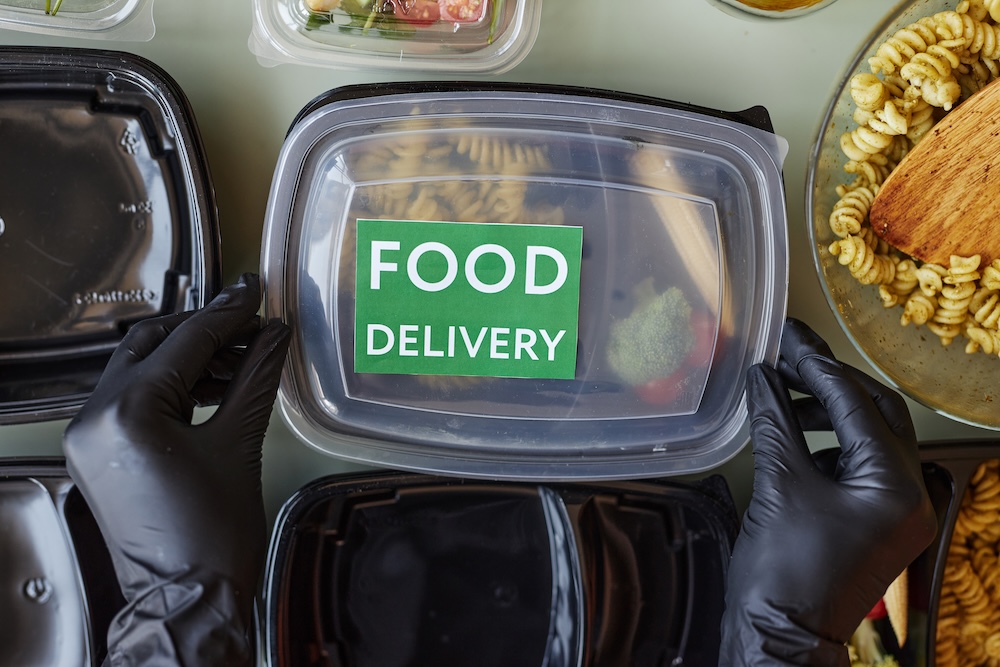Lunch breaks. Morning coffees. Team snacks. Vending machines.
It’s easy to forget just how much single-use waste is baked into the culture of the traditional office. But as return-to-office mandates ramp up across industries, we’re not just reviving commutes — we’re reviving a system of everyday disposables that add up to a serious environmental cost.
Remote work disrupted this routine. People made meals at home, brewed their own coffee, and ditched the vending machines. It wasn’t just healthier — it was cleaner. For the planet, too.
Let’s explore how the office-based food and beverage system generates waste — and why remote or hybrid work offers a critical opportunity for sustainable change.
The Disposable Reality of Office Eating
A typical day in the office might include:
- A coffee in a disposable cup from the café downstairs
- Lunch in a plastic container with a plastic fork and napkin
- A mid-afternoon snack from the vending machine or takeout
- Packaged water or soda bottles
- Team events with catered food in single-use packaging
Most of these items are used once — and trashed in under 30 minutes.
According to the EPA, food containers and packaging make up:
- Over 23% of landfill waste in the U.S.
- More than 14 million tons of plastic packaging per year
- Billions of items that are unrecyclable due to food residue
Remote workers, by contrast, prepare and eat meals with reusable dishes, silverware, and cups — reducing plastic dependency by default.
Takeout Culture Fuels Climate and Plastic Pollution
When offices rely on third-party food delivery or cafeteria service, the environmental impact is widespread:
- Emissions from daily delivery vehicles
- Styrofoam, plastic, and wax-lined packaging
- Plastic cutlery, straws, lids, and wrappers
- Non-recyclable sauce packets, napkins, and condiment packs
- Leftover food waste, which often ends up in the trash, not compost
Globally, we use over 500 billion plastic food containers and utensils per year — the majority tied to convenience food systems like office takeout and delivery.
Remote work dramatically cuts this cycle by making home-cooked meals the default.
Cafeteria and Vending Machine Waste
Even when food is provided in-house, office setups aren’t much better:
- Vending machines are filled with plastic-wrapped snacks and bottles
- Office pantries stock individually wrapped items for “sanitation”
- Corporate cafeterias prioritize convenience over sustainability
Few companies compost, few use real dishes, and most outsource food prep, meaning less control over supply chain emissions or ingredient sourcing.
The Hidden Costs of “Free” Office Food
While many companies tout perks like snacks, catered lunches, or coffee bars, these often create:
- Mountains of single-use waste
- More processed and packaged foods
- A throwaway mindset tied to convenience
Even well-meaning efforts like free granola bars or soda fridges result in hundreds of wrappers, cans, and containers each week.
Remote work doesn’t eliminate snacking — but it removes the corporate incentive to provide waste-heavy food systems. People can choose what to eat, how to prepare it, and what kind of packaging they bring into their homes.
Remote Work Supports Home-Based Sustainability
At home, people can:
- Use reusable plates, utensils, napkins, and cups
- Compost leftovers instead of tossing them in an office trash can
- Cook fresh meals with whole ingredients, reducing packaged waste
- Brew their own coffee or tea in ceramic mugs
- Store snacks in glass jars or cloth bags
The result is a smaller footprint per meal — and a shift away from the convenience = disposability mindset that drives much of office waste.
What About Hybrid Workers?
Even a few days at home can make a difference.
For hybrid workers:
- Plan ahead: bring reusable containers, silverware, and cloth napkins to the office
- Opt out of daily delivery: pack your own meals or request low-waste options
- Push back on disposables: ask your company to reduce plastic and improve recycling
- Request sustainable vendors for events and catering
Small changes multiplied by hundreds of employees can reduce tons of waste annually.
What Companies Can Do to Reduce Waste
If returning to the office is non-negotiable, companies should:
- Ditch disposable coffee pods and single-serve plastics
- Provide real dishes (and dishwashers) or compostable alternatives
- Add compost bins and educate staff on proper sorting
- Choose caterers that use sustainable packaging or allow BYO containers
- Phase out vending machines in favor of refill stations or bulk snack dispensers
Office culture doesn’t have to mean waste culture. But it takes intention to make that shift.
Final Thoughts: Let’s Not Go Backward
The return to the office shouldn’t mean a return to waste.
Remote work gave us a glimpse into a lower-waste lifestyle — one where daily food and drink choices aligned better with environmental values. We cooked more. We packaged less. We reused what we had.
In contrast, office routines often lean heavily on disposables, takeout culture, and convenience-over-care — even if no one’s noticing.
But here’s the thing: those little choices add up. Multiply a single office lunch by a year, by dozens or hundreds of people — and you start to see the real footprint.
We’re not just wasting forks and cups. We’re wasting a chance to do better.
If remote or hybrid work helps reduce that waste, it deserves a seat at the sustainability table.








Reader Interactions